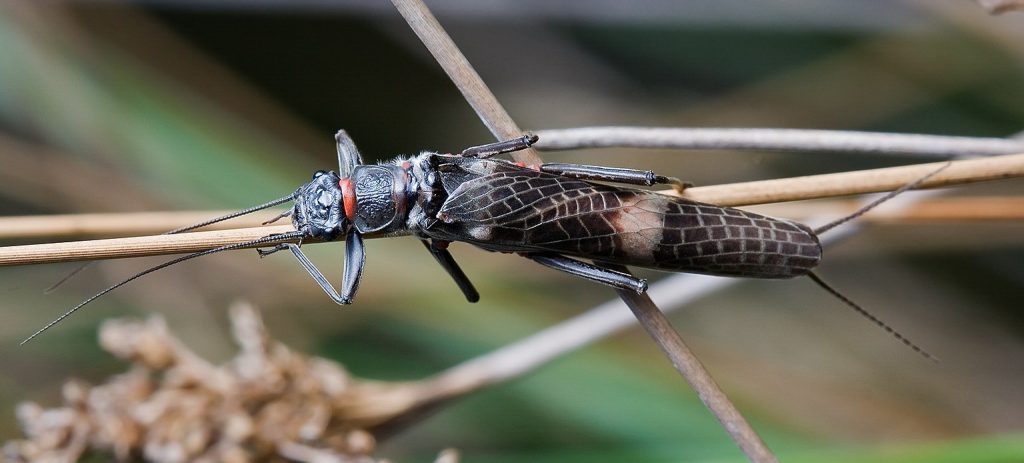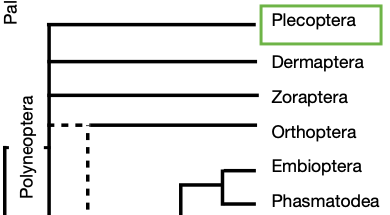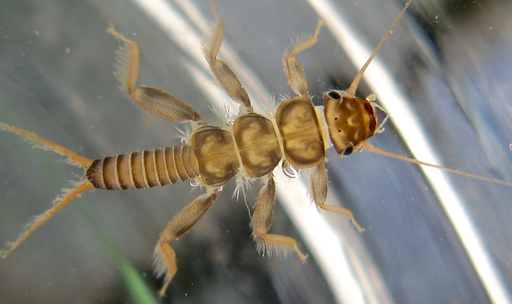17 Orders of Insects: Plecoptera


Order Plecoptera
Plecoptera
- common name: stoneflies
- Greek, plekein = to fold; pteron = wing
- worldwide distribution over 2,000 species; about 191 described species in Australia, mainly described from adult material
- adults are terrestrial but always live near water; immatures (nymphs or naiads) aquatic; mainly live in cool, clean, running water
- adults are herbivorous feeding on algae, lichens, detritus; nymphs are mainly herbivorous
Characteristics of Plecoptera
Adults
- Medium sized, elongate, soft-bodied insects
- large compound eyes, 2-3 ocelli; antennae long, filiform; mandibles present but reduced
- two pair of membranous wings; wings partly wrap around body at rest; hind wings somewhat larger than forewings; wing reduction is frequent; legs long and delicate
- abdomen soft with two filamentous cerci
Immatures
- Immature stages (nymphs) are aquatic; resemble wingless adults
- gills along side of abdomen or some have a tuft of anal gills; two filamentous cerci
Stoneflies are not common in Australia, in fact, only a few species are found in the Southern Hemisphere. They prefer temperate climates and cool montane streams. Most Australian species inhabit eastern Australia and Tasmania. The presence of stonefly larvae is often an indicator of high water quality as they are not found in polluted water. Nymphs of many Australian species are still unknown or undescribed.
“Surface skimming” by adult Plecoptera has been suggested to indicate how flight could have originated in insects!

Topic Review
Do you know…?
- The main anatomical features of stoneflies
- The role of stoneflies in freshwater ecology

